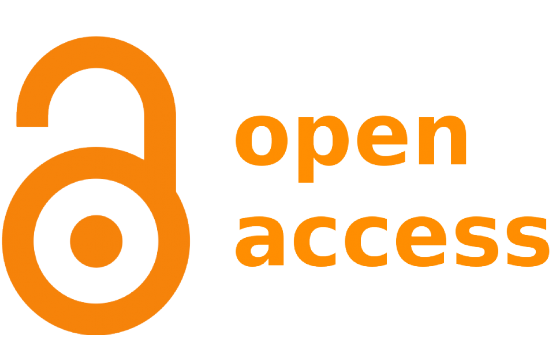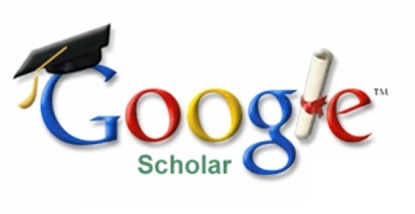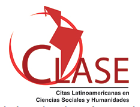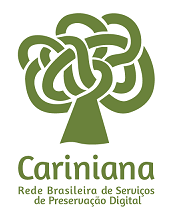An analysis of the international scientific production in accounting applied to the agribusiness sector
DOI:
https://doi.org/10.5433/1679-0383.2020v41n2p173Keywords:
Bibliometrics, Lotka's Law, Scientific production, Agribusiness, ProductivityAbstract
The objective of this research is to analyze the profile of the scientific production in accounting applied to the agribusiness' sector, in light of the Law of Lotka. The data were collected in five databases: Emerald, Scopus, Web of Science, SciELO and ScienceDirect. A total of 106 documents were analyzed in: i) quantity of works were produced by author; ii) institutional link of authors; iii) type of document produced; and iv) topics covered in pre-defined subareas. It was concluded that the scientific production in this area has grown in the last 10 years (2007-2017), mainly in topics that permeate the discussion about biological assets and agribusiness costs. The scientific journals identified with the largest number of contributions were Costs and Agribusiness On line, Agricultural Finance Review and Agribusiness, and the Brazilian newspaper presented a larger amount of scientific production, highlighting the importance of the exporting country has in relation to the agribusiness sector. However, the most prolific outstanding authors are not Brazilian, the fact can be evidenced by the scarcity of the quantity of production of Brazilian authors who publish several times in the subject or few Brazilian authors publish in English language. On the productivity of the authors, Lotka's maxim (1926) could be observed, however, when analyzing the empirical method of squared inversion proposed by Pao (1985), the coefficients that represent the productivity relationship of the authors distanced themselves from the Lotka's Law. The statistical relationship was verified through the Kolmogorov-Smirnov (K-S) test, the results of this research point out the acceptance of the null hypothesis at 0.01 level of significance. For acceptance of the alternative hypothesis, the Dmax should be less than the critical value, but the specificity of the subject, with the presence of few articles in the area, increases the critical value, resulting in rejection of the alternative hypothesis.Downloads
References
ARAÚJO, C. A. Bibliometria: evolução histórica e questões atuais. Em Questão, Porto Alegre, v. 12, n. 1, p. 11-32, 2006.
ARAÚJO, R. F.; ALVARENGA, L. A bibliometria na pesquisa científica da pós-graduação brasileira de 1987 a 2007. Encontros Bibli: Revista Eletrônica de Biblioteconomia e Ciência da Informação, Florianópolis, v. 16, n. 31, p. 51-70, 2011.
BORGES, L. T. Uso do hedge como proteção à variação do preço do dólar e da soja pela COAMO agroindustrial cooperativa. 2016. 60 f. Trabalho de Conclusão de Curso (Especialização em Gestão do Agronegócio) - Universidade Federal do Paraná, Curitiba, 2016.
BOURDIEU, P. O campo científico. In: ORTIZ, R. (org.). Pierre Bourdieu: sociologia. São Paulo: Ática, 1983. p. 122-155.
CAFÉ, A.; CARVALHO, K.; MENEZES, V.; ODDONE, N. A elite acadêmica da sociologia no Brasil e sua produção científica. Informação & Informação, Londrina, v. 16, n. 3, p. 19-39, 2011.
DANIELSON, M. G; HECK, J. L. Giving Credit where credit is due: summary analysis of the most prolific authors in 15 high-impact accounting journals. Advances in Accounting, Albany, v. 26, n. 2, p. 195-206, 2010.
FIGUEIREDO, A. M.; SANTOS, M. L.; LIMA, J. F. Importância do agronegócio para o crescimento econômico de Brasil e Estados Unidos. Gestão & Regionalidade, São Caetano do Sul, v. 28, n. 82, p. 5-17, 2012.
GASQUES, J. G.; REZENDE, G. C. de; VERDE, C. M. V.; SALERMO, M. S.; COCEIÇÃO, J. C. P. R. da; CARVALHO, J. C. de S. Desempenho e crescimento do agronegócio no Brasil. Brasília: IPEA, 2004. Disponível em: https://bit.ly/3feo1yP. Acesso em: 15 jan. 2019.
GOODMAN, L. A. Kolmogorov-Simonov tests for psychological research. Psychological Bulletin, Washington, v. 51, n. 2, p. 160-168, 1954.
GUEDES, V. L. S.; BORSCHIVER, S. Bibliometria: uma ferramenta estatística para a gestão da informação e do conhecimento, em sistemas de informação, de comunicação e de avaliação científica e tecnológica. In: ENCONTRO NACIONAL DE CIÊNCIA DA INFORMAÇÃO - CINFORM, 6., Salvador. Anais [...]. Salvador: UFBA, 2005. Disponível em: https://bit.ly/2W3zWI5. Acesso em: 15 jan. 2019.
JANK, M. S.; NASSAR, A. M.; TACHINARDI, M. H. Agronegócio e comércio exterior brasileiro. Revista USP, São Paulo, n. 64, p. 14-27, 2005.
LEITE FILHO, G. A. Padrões de produtividade de autores em periódicos e congressos na área de contabilidade no Brasil: um estudo bibliométrico. Revista de Administração Contemporânea, Rio de Janeiro, v. 12, n. 2, p. 533-554, 2008.
LOTKA, A. J. The frequency distribution of scientific productivity. Journal of the Washington Academy of Sciences, Washington, v. 16, n. 12, p. 317-323, 1926.
MERIGÓ, J. M.; YANG, J. B. Accounting research: a bibliometric analysis. Australian Accounting Review, Hoboken, v. 27, n. 80, p. 71-100, 2017.
MORAIS, L. C.; CARNEIRO, L. F. R. Uso de derivativos agropecuários como alternativa na comercialização da soja no mato grosso do sul. In: ENCONTRO INTERNACIONAL DE GESTÃO, DESENVOLVIMENTO E INOVAÇÃO, 2017, Naviraí, MS. Anais [...]. Naviraí: UFMS, 2017. Disponível em: https://bit.ly/3e9brzn. Acesso em 15 de janeiro de 2019.
PAO, M. L. Lotka's law: a testing procedure. Information Processing & Management, Elmsford, v. 21, n. 4, p. 305-320, 1985.
PEREIRA, N. A; MOURA, M. F. Custos no agronegócio: um estudo bibliométrico dos anos de 2003 a 2013. RAGC: Revista de Auditoria, Governança e Contabilidade, Monte Carmelo, v. 4, n. 10, p. 134-149, 2016.
QUESADA, V. B.; MINGUILLO, D.; CHINCHILLA, Z. R.; ANEGÓN, F. M. Structure of Spanish scientific collaboration in Library and Information Sciences (Scopus 1999-2007). Revista Interamericana de Bibliotecología, Medellín, v. 33, n. 1, p. 105-123, 2010.
RECH, I. J.; OLIVEIRA, K. G. Análise da aplicação do CPC 29 e IAS 41 aos ativos biológicos no setor de silvicultura. In: CONGRESSO ANPCONT, 5., 2011, Vitória, ES. Vitória: ANPCONT, 2011. p. 1-16.
RIBEIRO, H. C. M; SILVA, M. C. Mapeando a produção acadêmica da revista ambiente contábil à luz da bibliometria e rede social de 2009 a 2014. Sinergia, Rio Grande, RS, v. 20, n. 2, p. 89-102, 2016.
SILVA N. M. G.; CESÁRIO A. V.; CAVALCANTI I. R. Relevância do agronegócio para economia brasileira atual. In: ENCONTRO DE INICIAÇÃO À DOCÊNCIA, 2006, 10., João Pessoa, PB. Anais [...]. João Pessoa, UFPB, 2006. Disponível em: https://bit.ly/2ZRE0MJ. Acesso em: 15 jan. 2019.
SOBRINO, M. I. M.; CALDES, A. I. P.; GUERRERO, A. P. Lei de Lotka Aplicada à produção científica da área de ciência da informação. Brazilian Journal of Information Science, v. 2, n. 1, p. 16-32, 2008.
SOUZA, F. J. V; BARROS, C. C.; ARAÚJO, A. O.; SILVA, M. C. Perfil dos artigos sobre agronegócios publicados nos periódicos de contabilidade com estratos CAPES. ConTexto, Porto Alegre, v. 12, n. 22, p. 87-102, 2012.
TEIXEIRA, E. B. A análise de dados na pesquisa científica: importância e desafios em estudos organizacionais. Desenvolvimento Em Questão, Ijuí, v. 1, n. 2, p. 177-201, 2003.
UNIVERSIDADE DE SÃO PAULO - USP. Escola Superior de Agricultura Luiz de Queiroz - ESALQ. Centro de Estudos Avançados em Economia Aplicada - CEPEA. PIB do agronegócio brasileiro de 1996 a 2018. Piracicaba, SP: USP/CEPEA/ESALQ, 2018. Disponível em: https://www.cepea.esalq.usp.br/br/pib-do-agronegocio-brasileiro.aspx. Acesso em; 11 jul. 2019.
URBIZAGASTEGUI, R. A produtividade dos autores sobre a Lei de lotka. Ciência da Informação, Brasília, v. 37, n. 2, p. 87-102, 2008.
VANTI, N. A. P. Da bibliometria à webometria: uma exploração conceitual dos mecanismos utilizados para medir o registro da informação e a difusão do conhecimento. Ciência da Informação, Brasília, v. 31, n. 2, p. 369-379, 2002.
,
Downloads
Published
How to Cite
Issue
Section
License
Copyright (c) 2020 semina: Ciências Sociais e Humanas

This work is licensed under a Creative Commons Attribution-NonCommercial 4.0 International License.
Semina: Ciências Sociais e Humanas adopts the CC-BY-NC license for its publications, the copyright being held by the author, in cases of republication we recommend that authors indicate first publication in this journal.
This license allows you to copy and redistribute the material in any medium or format, remix, transform and develop the material, as long as it is not for commercial purposes. And due credit must be given to the creator.
The opinions expressed by the authors of the articles are their sole responsibility.
The magazine reserves the right to make normative, orthographic and grammatical changes to the originals in order to maintain the cultured standard of the language and the credibility of the vehicle. However, it will respect the writing style of the authors. Changes, corrections or suggestions of a conceptual nature will be sent to the authors when necessary.






















